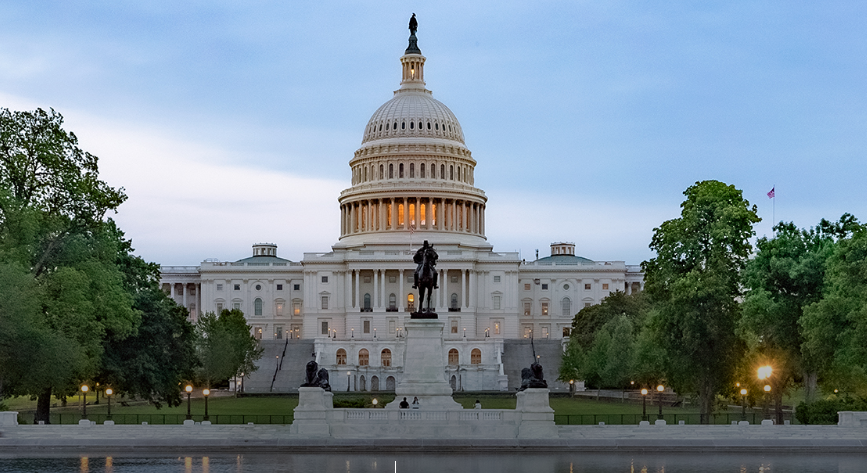Secure 2.0 is live!
On December 29, 2022, the President signed the Consolidated Appropriations Act of 2023 into law. With that signature, the SECURE 2.0 Act went live. Following the passage of the original SECURE Act in 2019, many members of Congress and retirement practitioners realized that there was still some room for improvement. Almost immediately, industry professionals could be heard discussing what might be incorporated in SECURE 2.0. Now, over two years from the release of SECURE Act, we know.
SECURE 2.0 contains over 90 provisions that affect various aspects of retirement savings plans across the spectrum. Some of these provisions require additional guidance from various regulatory bodies, while others are straightforward; some are effective immediately, while others become effective over the next few years; and some are mandatory, while others allow plan sponsors the choice in whether they want to adopt these provisions into their plan or not.
To give you an idea of what is to come, we’ve included a brief description of some of the provisions that we find interesting. Please note that plan document amendments are not yet available. The Act provides that conforming amendments are not required until the last day of the first plan year beginning on or after January 1, 2025. As the amendments become available, we will provide more information.
Effective immediately:
Section 102 - Modification of small employer plan credit. Existing startup credit of 50% of admin costs up to $5,000 is increased to 100% of costs up to $5,000 PLUS an additional credit of a percentage of the amount contributed by employers on behalf of employees up to a per-participant cap of $1,000.
Section 107 - Increase in age for required beginning date for mandatory distributions. Increases the required minimum distribution age further to 73 starting on January 1, 2023. Also increases the age to 75 starting on January 1, 2033.
Section 302 - Reduction in excise tax on certain accumulations in qualified retirement plans. Reduces the penalty for failure to take required minimum distributions from 50 to 25 percent. In certain circumstances, this may be further reduced to 10%.
Section 311 - Repayment of qualified birth or adoption distribution limited to 3 years. The SECURE Act established the ability for employers to allow Qualified Birth or Adoption Distributions as distribution options in their plan and allowed participants to repay the distribution over an undefined period. The period of repayment is now limited to three years.
Section 312 - Employer may rely on employee certifying that deemed hardship distribution conditions met. Under certain circumstances, employees may self-certify that they have had an event that constitutes a hardship for purposes of taking a hardship withdrawal.
Section 604 - Optional treatment of employer matching or nonelective contributions as Roth contributions. Defined contribution plans may now provide participants with the option of receiving matching contributions on a Roth basis.
Effective 1/1/2024:
Section 110, Treatment of student loan payments as elective deferrals for purposes of matching contributions. Employees making qualified student loan payments may have them treated as elective deferrals for the purpose of receiving employer matching contributions.
Section 115, Withdrawals for certain emergency expenses. Employers may allow for one permissible emergency withdrawal up to $1,000 in a given year with a 3 year recontribution period. If the amount is not recontributed, another withdrawal may not be taken within the 3 year period.
Section 304, Updating dollar limit for mandatory distributions.
The dollar limit for involuntary cash-out distributions (aka “force-outs”) may be raised from $5,000 to $7,000.
Section 316, Amendments to increase benefit accruals under plan for previous plan year allowed until employer tax return due date.
Employers who want to retroactively amend their plans to increase benefit accruals for participants may do so until the due date of their tax return for the year in question.
Section 325, Roth plan distribution rules. Pre-death distributions will no longer be required for Roth-designated accounts in employer-sponsored retirement plans.
Section 602, Hardship withdrawal rules for 403(b) plans.
The hardship withdrawal regulations for 403(b) plans with respect to sources available for the withdrawal will be brought into line with those available to 401(k) plans.
Section 603. Roth treatment of catch-up contributions. Catch-up contributions will be subject to Roth classification and treatment, with an exception for employees with compensation less than $145,000 (as further indexed).
Effective 1/1/2025:
Section 101, Expanding automatic enrollment in retirement plans.
With exceptions, new 401(k) and 403(b) plans must have an automatic enrollment provision of at least 3 percent, automatically increasing annually up to not more than 15%.
Section 109, Higher catch-up limit to apply at age 60, 61, 62, and 63.
Employees who have attained age 60, 61, 62, or 63 will have a higher catch-up limit, being the greater of $10,000 or 150% of the regular catch-up contributions limit for the year.
Section 125, Improving coverage for part-time workers.
The requirement to allow long-term part-time workers to participate in plans for elective deferral purposes from the original SECURE act is reducing the number of years in which an employee must have worked at least 500 hours from three years to two.
Once you have had the opportunity to review these provisions, please reach out to our office to discuss in more detail, should you have any questions. We will be diligent in our updates, as more information is released. As TPA, we are here to make sure that all the plans we administer, are compliant with newest law changes and that our advisors and clients feel confident about these changes.

